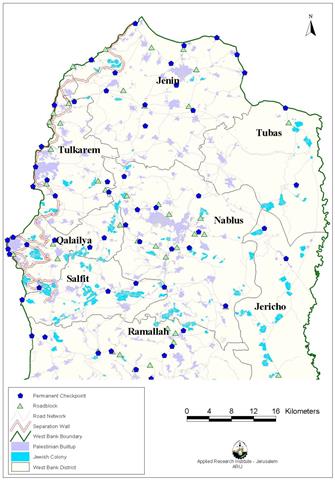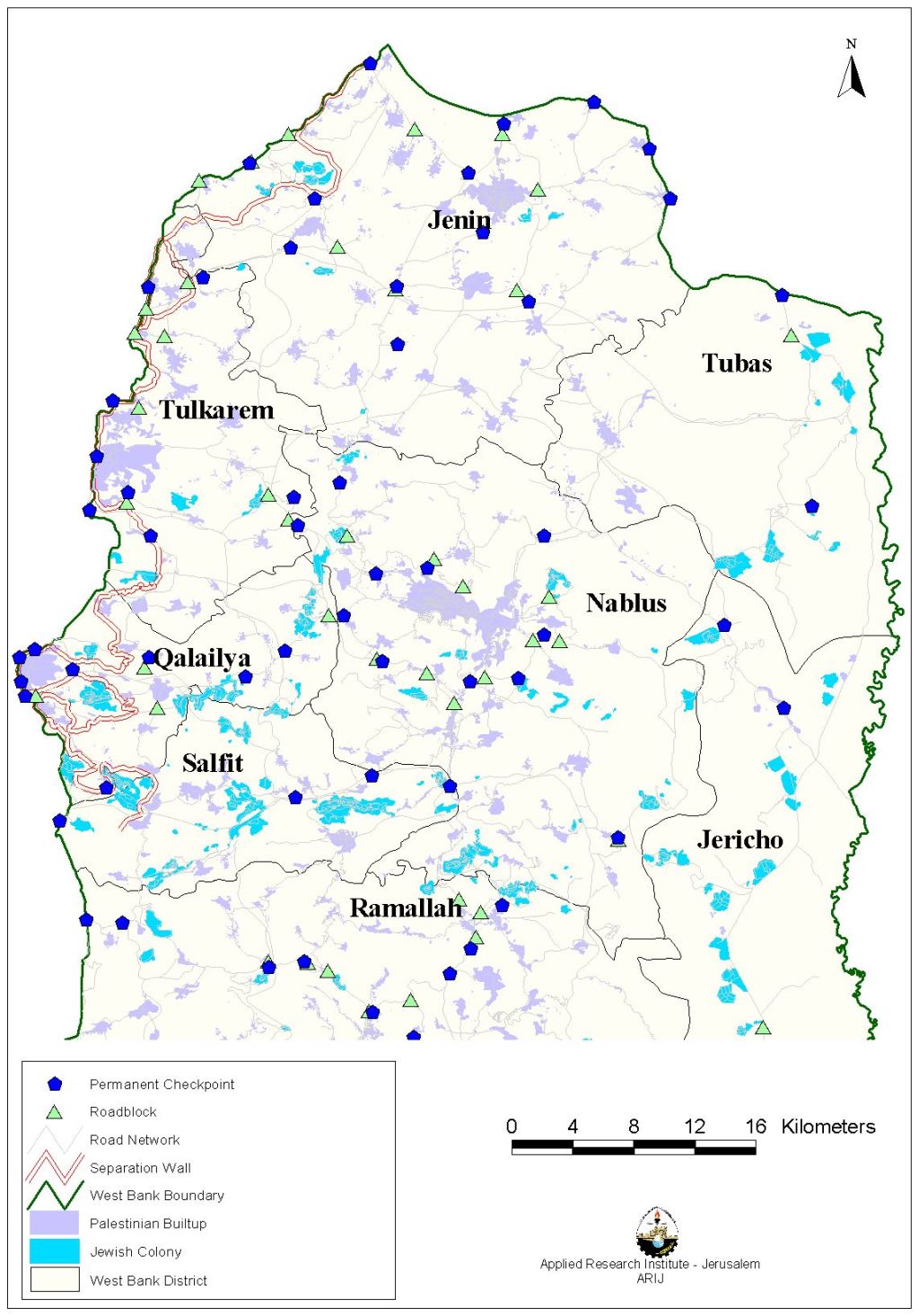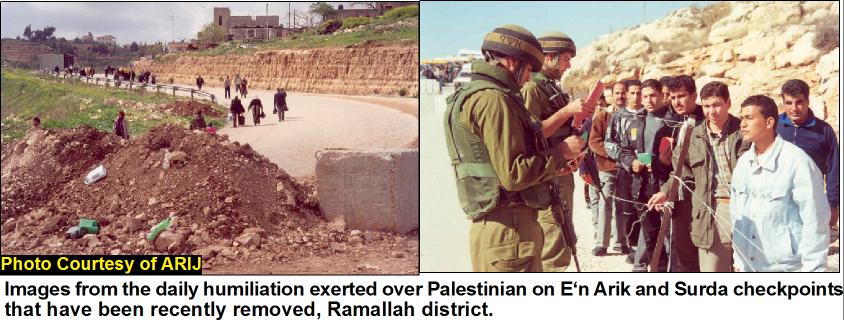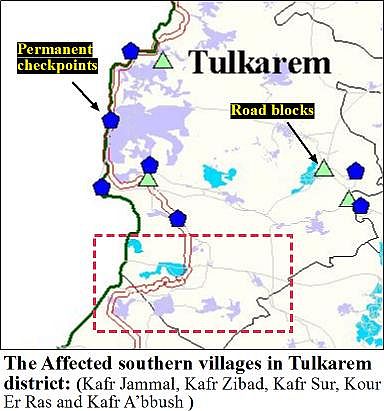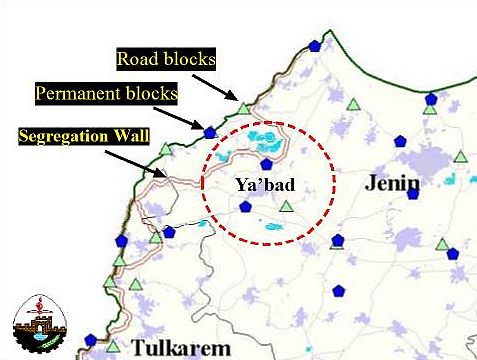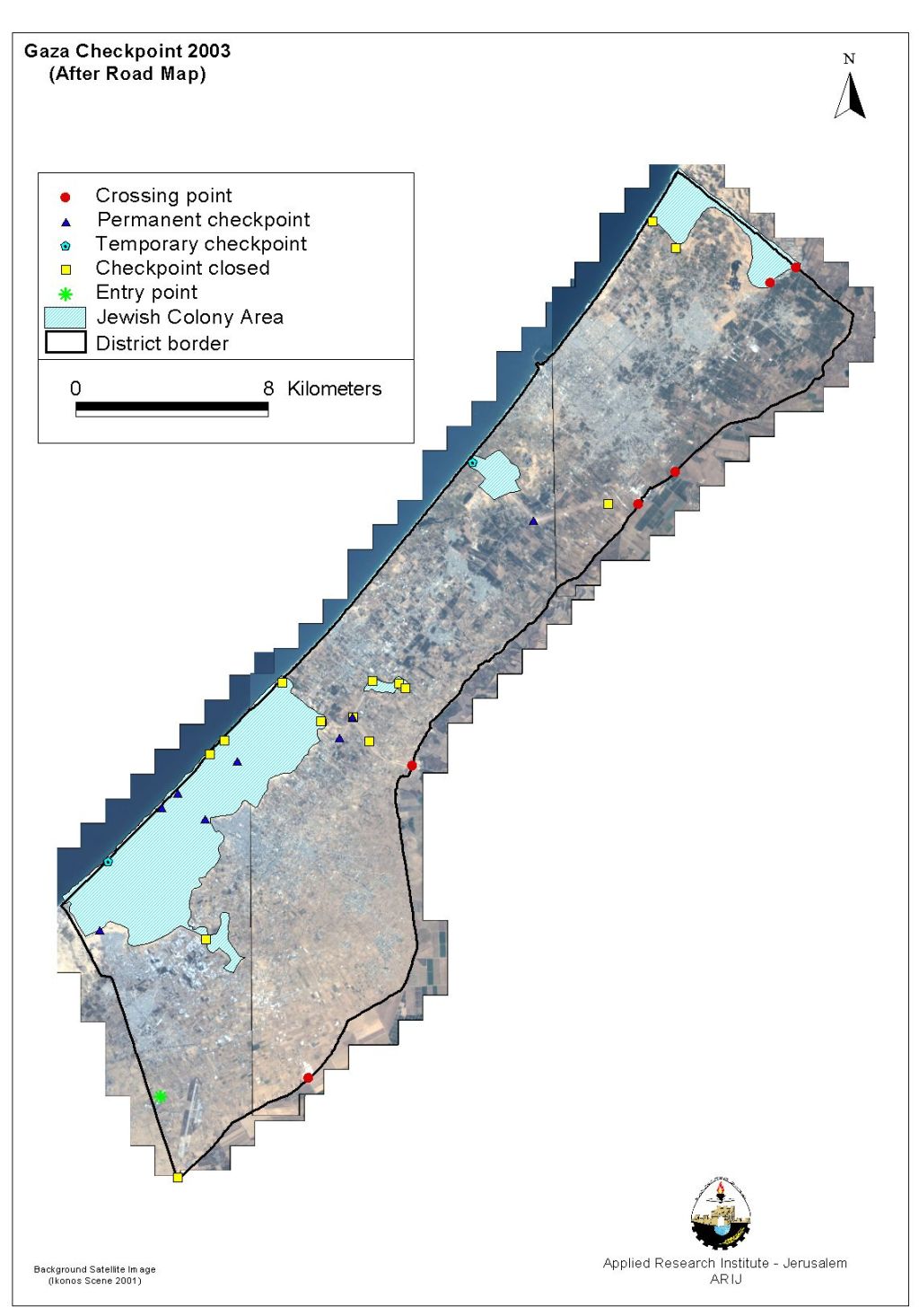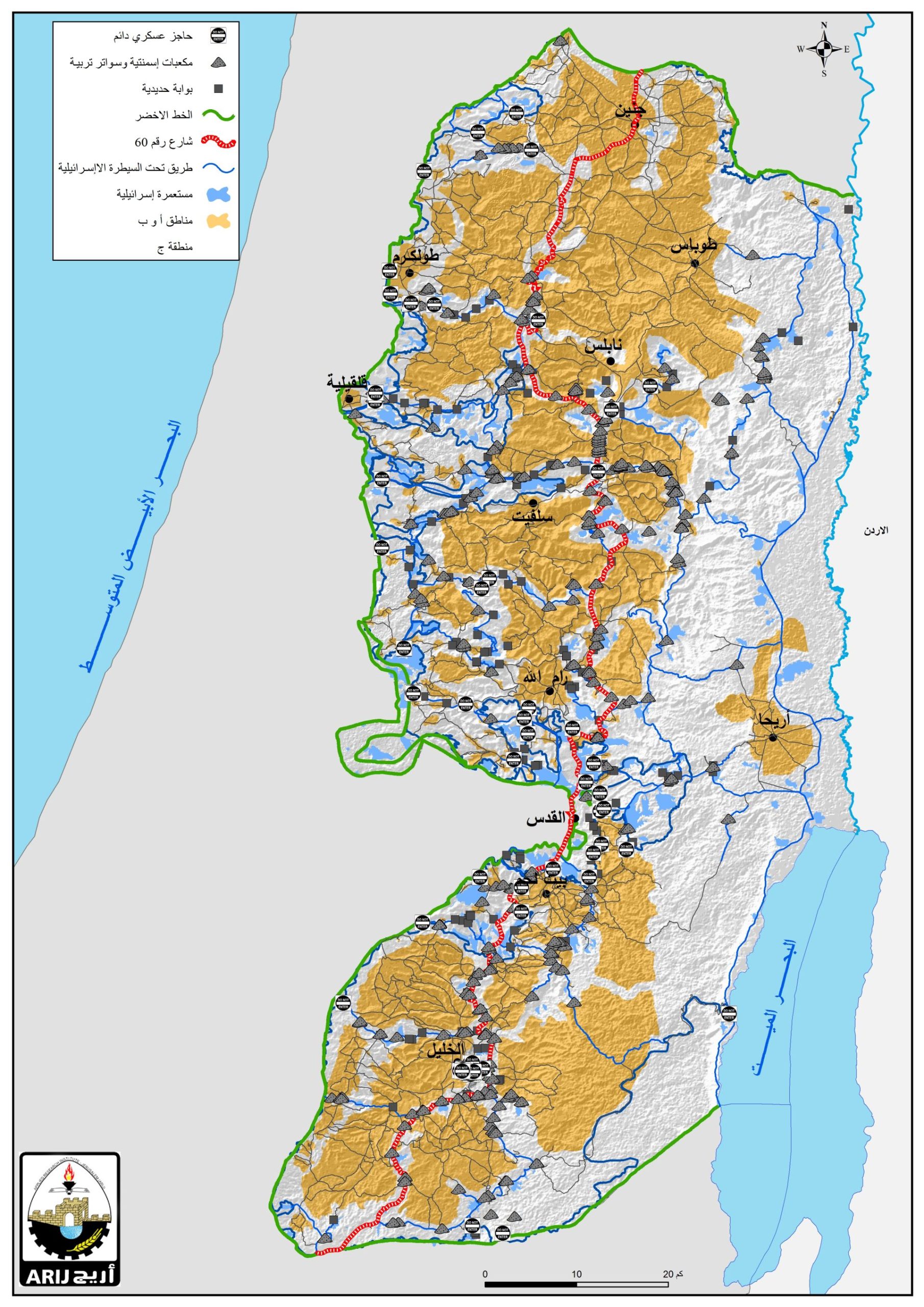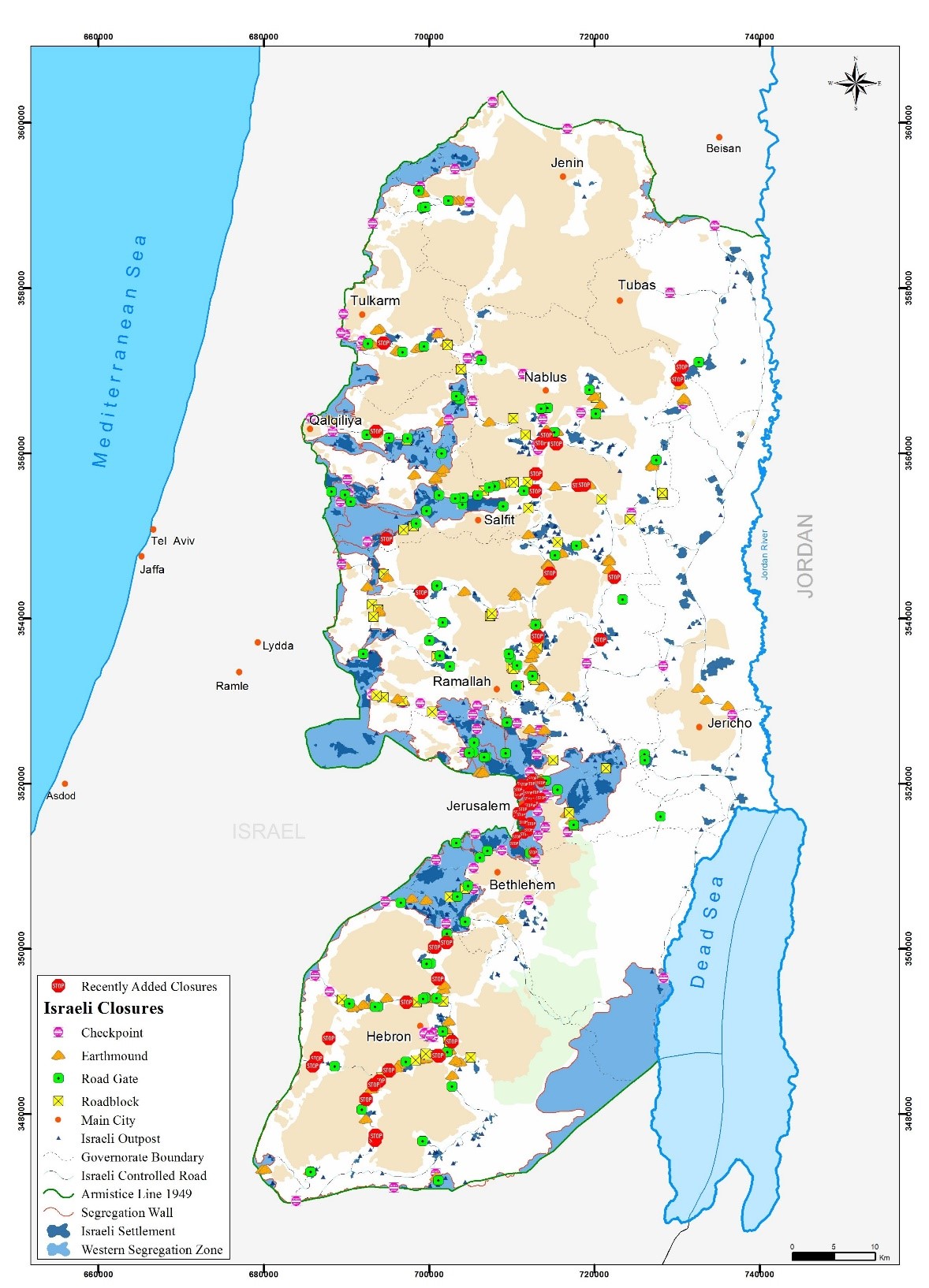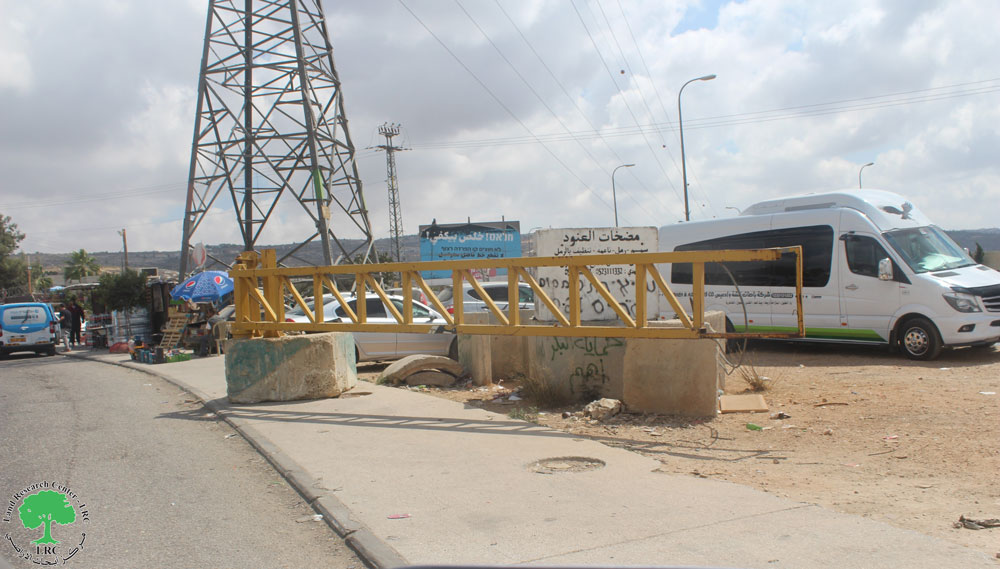For the past two and a half years, the Israeli Occupation Forces erected more than 169 checkpoints and roadblocks all through the main and secondary roads of the West Bank. These checkpoints divided the Palestinian cities and villages into cantons and made it very hard for people to move and to maintain a normal life. Recently, and upon the understanding between the Palestinian National Authority and the Israeli government, a total number of twelve out of 169 checkpoints and earth mounts have been removed in the West Bank. See map of checkpoints
Three checkpoints or road blocks were removed from Bethlehem district, another three in Ramallah, two in Jenin district and one between Ramallah-Nablus main road. Despite the fact that the removal of these roadblocks supposed to ease the movement of thousands of Palestinian villagers and passengers, it remains that over 150 roadblocks and checkpoints scattered all around the West Bank deprive hundreds of thousands of Palestinian from the right to freedom of movement, the right to work, the right to health and to education. See Photo 1
The following Table gives numbers of checkpoints and roadblocks in the northern districts including those which have been removed recently. Table 1: Population in the main city and the surrounding communities affected by the closure
|
District |
Population of main city |
Population of rural areas |
Barriers Removed* |
Number of Israeli barriers |
||
|
Army checkpoint |
Road block |
Iron gates |
||||
|
Nablus |
126.884 |
193.346 |
– |
11 |
11 |
– |
|
Jenin |
33.786 |
211.303 |
2 |
13 |
9 |
2 |
|
Tulkarm |
42.991 |
121.286 |
– |
8 |
8 |
– |
|
Qalqiliya |
41.616 |
48.818 |
4 |
1 |
5 |
5 |
|
Tubas |
15104 |
27271 |
– |
2 |
1 |
– |
Source: PCBS projection 2003 and ARIJ GIS Database 2003
* Barriers including those in Bethlehem and Ramallah districts have been re-closed .
Harsh measurements despite the announcement of Al-Hodna
In the past few months, the Israeli Occupation Forces imposed significantly harsher restrictions on the movement of Palestinians living in the West Bank northern districts; Tulkarm, Qalqiliya, Jenin, Tubas and Nablus . A total number of 69 checkpoints and road blocks in addition to 7 iron gates are erected within the northern districts. Almost, all main and secondary roads connecting the main cities with the surrounding rural areas are blocked with earth mounts and large stones. Palestinian patients, workers and students are suffering from the daily intimidation and systematic delay exercised by the Israeli Occupation Forces-IOF.
Palestinians were forced to make their daily trips to work, school, hospitals or market through using alternative roads that pass through mountains and agricultural lands. Recently, and despite the latest ''general'' Israeli commitment to ease the closure, harsh measures have been imposed on Palestinian villagers living to the southeast of Tulkarm district, See map of Tulkarm. Israeli Forces are scattered around the main roads and in the mountains nearby, creating more obstacles and risky ones to those Palestinians trying to avoid the daily humiliation and the long delay exercised by the Israeli Occupation Forces at the checkpoints.
Six villages located southeast of Tulkarm district with population of 7027 (PCBS Projection 2003) are now isolated and living in a big prison. Palestinian citizens living in Kafr Jammal, Kafr Zibad, Kafr Sur , Kour, Er Ras and Kafr A'bbush are suffering from the tight closure and isolation they have been living for almost 2 years. Refer to Map of Checkpoints
Daily suffering of Habla citizen
Another apparent example of the Israeli oppressive acts against Palestinian civilians is the closure of Habla village main road with an iron gate. Movement is allowed during specific opening time of the morning and the evening. The citizens of Habla have to pass this road in their way to Qalqiliya city, the major commercial center in the district and they are forced to use an alternative road running through the mountain making a round of about 30 Kilometers to reach Qalqiliya city which is only 3 kilometers away from their village, Habla. See Map 3
Ya'bad main entrance has been reopened after three years of closure
In Jenin district, the two Palestinian villages of Ya'bad and Tura El Gharbiya, -14681 inhabitants (PCBS 2003 projection), have always been subjected to collective punishment by the Israeli Occupation Forces-IOF. Since the outbreak of the Al-Aqsa Intifada three years ago, these two villages and other surroundings Palestinian communities west of Jenin district suffered from the oppressive control of the main roads by the Israeli Army, that serve only the movement of the Israeli colonists in the area. See Map 4.
Ya'bad and Tura El Gharbiya main roads, allowing passengers from that area to reach Jenin city using their own vehicles. In the same time, activists from the International Solidarity Movement with the Palestinian people removed the cement blocks and the earth mounts which closed the main road of the Palestinian village of Silat El Harithiya, North West Jenin district. This barrier was erected two years ago and turned the village into a small prison.
On August 7,2003 the IOF re-opened the main roads of Ya'bad village west of Jenin district, allowing passengers from that area to reach Jenin city using their own vehicles. In the same time, Activists from the International Solidarity Movement with the Palestinian people removed the cement blocks and the earth mounts which closed the main road of the Palestinian village of Silat El Harithiya, North West Jenin district. This barrier was erected two years ago and turned the village into a small prison.
Magnetic ports on Qalandya checkpoints
Thousands of Palestinian passengers have to pass now through magnetic ports erected recently at Qalandia checkpoint; the only entrance to Ramallah and the northern districts of the West Bank. It would be very miserable to talk about the suffering of hundreds of students passing the checkpoint every day. See Photo 2 & photo 3
69 Palestinians died following delay in obtaining medical treatment because of restriction of movement
Palestinian ill people are facing the same fate on the ''humiliation place''; they are often prevented from moving along the main roads whether by Israeli soldiers or the physical obstacles (concrete blocks and earth mounts). Dr. Kamal Al Sharafi, the minister of health in the Palestinian National Authority reported the death of 69 Palestinian patients because of delay on movement at the checkpoints. Moreover, 52 cases of giving birth on checkpoints have been recorded, from whom 29 new born babies died because of lack of medical treatment. Al Quds newspaper, August 3, 2003
24 Checkpoints and road blocks dividing the Gaza Strip into 3 cantons
According to ARIJ and PCHR field survey done on August 2003, a total number of 24 checkpoints and road blocks are dividing the Gaza Strip into three separate geographical units. One tragedy case is the harsh restrictions imposed on Al-Mawasi residents' movement. Because of its coastal location and closeness to Gush Katif Jewish block, the Israeli Occupation Forces-IOF restricted the entry and exit of the residents from the area to three ways: through the Tufah crossing in Khan Younis, the Rafah crossing in Rafah, and via the costal Road.
Since the outbreak of Al-Aqsa Intifada, the IOF has placed additional restrictions on the movement of residents in al-Mawasi. Entry was restricted only to residents of the area after having a magnetic card with a number from the Israeli Authority, moreover only one checkpoint is opened for those card holders and within specific hours during the day. See map 5
Table 2: Palestinian population affected by Israeli checkpoints in Gaza Strip
|
District |
Population |
Number of Israeli Barriers |
||
|
Permanent |
Temporary |
Road block |
||
|
North Gaza |
179690 |
– |
– |
2 |
|
Gaza |
359941 |
1 |
1 |
1 |
|
Deir el-Balah |
144890 |
1 |
– |
5 |
|
Khan Yunis |
196662 |
5 |
– |
4 |
|
Rafah |
120386 |
1 |
1 |
2 |
Source: PCHR field survey, August 2003.
PCBS census 1997.
To conclude, Israeli checkpoints are one of the on-the-ground facts of Israeli military occupation and they became a place of Humiliation. This permanent imprisonment of Palestinian people and the infringement of other human rights are not justifiable on the grounds of security. Such Israeli oppressive policies against the Palestinian civil population not only violate International laws but also cause a lot of frustration and despair for Palestinian people. Moreover, these restrictions are imposed over only Palestinians , meanwhile, settlers are free to move and travel along the bypass roads built especially for them on confiscated Palestinian lands.
Prepared by:
The Applied Research Institute – Jerusalem


